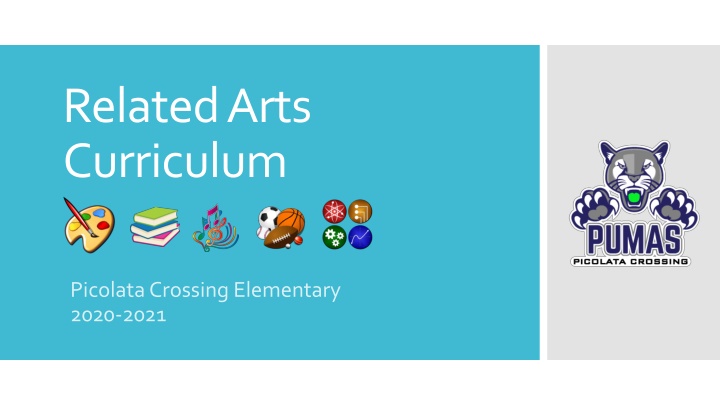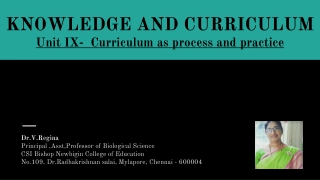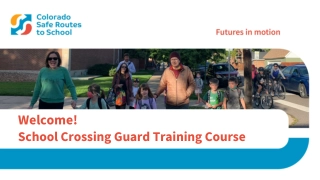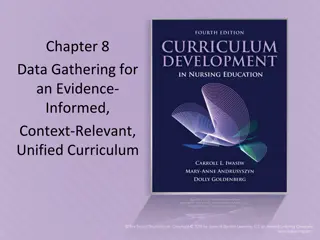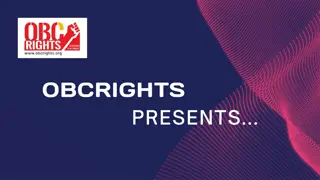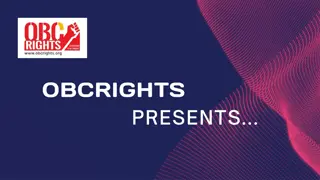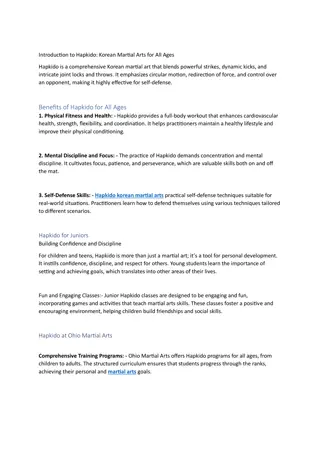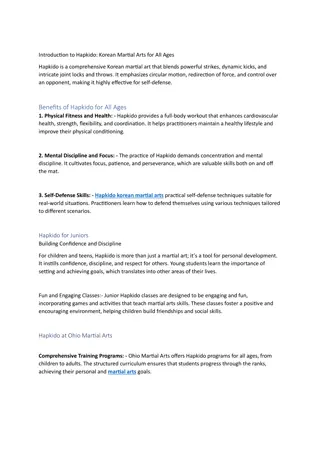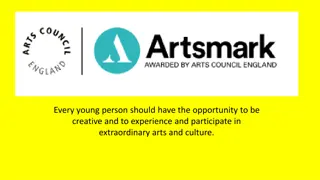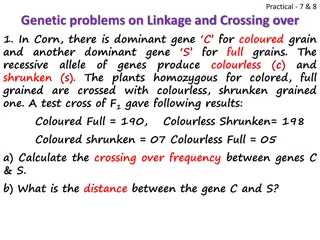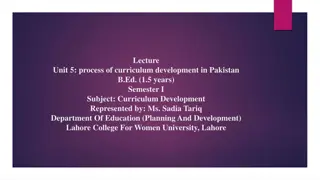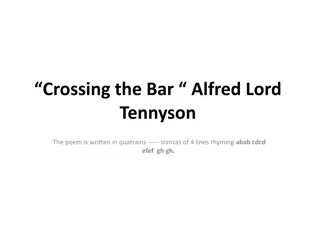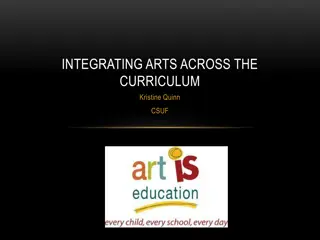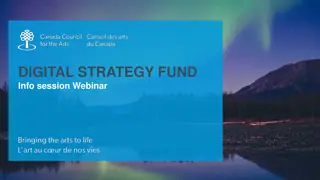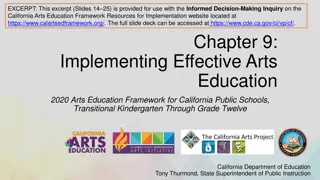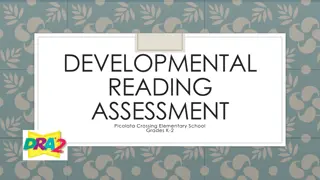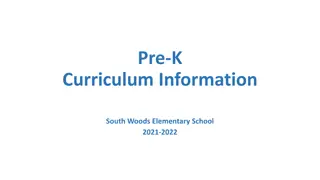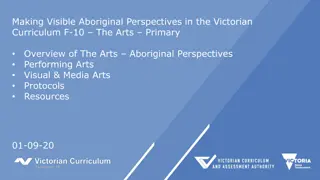Related Arts Curriculum at Picolata Crossing Elementary
The Related Arts Curriculum at Picolata Crossing Elementary for the 2020-2021 academic year covers various art forms including visual arts, music, physical education, and STEM. Students from Kindergarten to Fifth Grade engage in activities focused on creating, identifying, and experimenting with different artistic elements. The curriculum encourages critical thinking, creativity, and exploration through hands-on experiences in art and other related subjects. The program also emphasizes the importance of learning digital citizenship and research skills in the modern age.
Download Presentation

Please find below an Image/Link to download the presentation.
The content on the website is provided AS IS for your information and personal use only. It may not be sold, licensed, or shared on other websites without obtaining consent from the author.If you encounter any issues during the download, it is possible that the publisher has removed the file from their server.
You are allowed to download the files provided on this website for personal or commercial use, subject to the condition that they are used lawfully. All files are the property of their respective owners.
The content on the website is provided AS IS for your information and personal use only. It may not be sold, licensed, or shared on other websites without obtaining consent from the author.
E N D
Presentation Transcript
Related Arts Curriculum Picolata Crossing Elementary 2020-2021
Art Ms. Moraska Media Mrs. Yelvington Mrs. Giesey Music Mrs. Cananzi Physical Education Coach Higdon Mrs. Johnstone STEM Mrs. Huber Picolata Crossing Elementary Related Arts Team
Kindergarten: Students will create and identify basic lines and shapes. Students will recognize and create pattern and textures. Students willrecognizeandcreate PrimaryandSecondarycolors. First Grade: Students will use horizontal and vertical lines. Students will understand focal point and contrast. Students will identify and create geometric and organic/free form shapes. Students will be able to identify patterns and recognize the difference between 2Dshapesand3Dforms. Art with Ms. Moraska Second asymmetrical shapes. Students will create 3D forms. Students will use and identify warm/cool colors. Students will compare and create actual texture and implied texture. Students will create and experiment will collage and use foreground, middleground, and backgroundtocreate space. Grade: Students will identify symmetrical and
Third Grade: Students will compare realistic and abstract art. Students will use lines to create texture and experiment with shading and blending to create 3D forms. Students will experiment with value, using tints and shades to create a monochromatic color scheme. landscapesandthe horizonlineto createthe illusionofspace. Fourth Grade: Students will compare and contrast abstract, and non-objective artwork. Students will identify and create Tertiary and Complementary colors. Students will use emphasis, repetition, and movement in their artwork and learn to write anartiststatement describing their work. Fifth Grade: Students will learn how to create depth and perspective in their artwork. Students will learn about proportion and contour lines to create the human form. Students will learn about and create harmony and unity in their work using radial balance and analogous colors. Students will learn about printmaking and a create a block-print. Students will learn how to analyzeanddiscuss artworkanddevelop artiststatements. Students will learn about realistic, Art with Ms. Moraska
Using the American Library Standards, we are teaching our students how to: Navigate around the library (fiction & non-fiction books) Find good-fit books Become effective digital citizens Learn to do research Become life-long thinkers, creators and readers Media with Mrs. Yelvington & Mrs. Giesey Book Challenges: SSYRA & SSYRA Jr. (Sunshine State Young Readers Awards) 20 Book Challenge (reading books with various genres)
The Next Generation Sunshine State Standard Big Ideas provide an overview of what students will learn and be able to do. They are as follows: Critical Thinking and Reflection: Critical and creative thinking, self-expression and communication with others are central to the arts. Historical and Global Connections: Through dance, music, theatre and visual arts, students learn that beginners, amateurs and professionals benefit from working to improve and maintain skills over time. Innovations, Technology and the Future: Works in dance, music, theatre and visual arts are organized by elements and principles that guide creators, interpreters and responders. Organizational Structure: Experiences in the arts foster understanding, acceptance and enrichment among individuals, groups and cultures from around the world and across time. Skills, Techniques and Processes: Experiences in the arts foster understanding, acceptance and enrichment among individuals, groups and cultures from around the world and across time. Music with Mrs. Cananzi Using the Orff-Schuelwerk approach to music education, students will combine using instruments, singing, moving, and speaking to develop their innate musical abilities. Four stages of learning are identified and utilized to establish the fundamental building blocks of music literacy development: imitation, exploration, improvisation, and composition. To learn more about Orff-Schuelwerk, click Here
Students will work on locomotor movements. Students will work on throwing and catching skills. Students will work on dribbling with their hands (basketball) and their feet (soccer). Students will work on striking with golf clubs. Students will work on striking with tennis rackets. Students will work on striking with hockey sticks. Physical Education with Coach Higdon & Mrs. Johnstone
Science Students will participate in science activities that align with state math standards for each grade level. Student lessons will focus on content that is assessed on the Grade 5 Statewide Science Assessment. Technology Students will participate in typing, coding, and robotics lessons. Engineering Students will engage in engineering challenges that follow the Engineering Design Process. Ask Imagine Plan Create Improve Communicate STEM with Mrs. Huber Math Students will participate in math activities that align with state math standards for each grade level to reinforce content covered in homeroom classrooms.
Students are expected to: talk at appropriate times use kind words when speaking to classmates and teachers use classroom materials properly and with respect keep his/her hands to themselves follow directions the first time use self control participate in all classroom activities Behavior Should a student not meet our class expectations, you will be notified with a note home. We kindly ask that you sign and return the note as soon as possible. Class behavior is recorded through ClassDojo. Classes can earn up to 2 points per class period for meeting behavior expectations. The class with the most ClassDojo points for their grade level will be rewarded each quarter.
Please contact us if you have any questions. Art Caitlin.Moraska@stjohns.k12.fl.us Media Kelly.Yelvington@stjohns.k12.fl.us Contact Information Music Jill.Cananzi@stjohns.k12.fl.us Physical Education Jonathan.Higdon@stjohns.k12.fl.us STEM Hollie.Huber@stjohns.k12.fl.us
